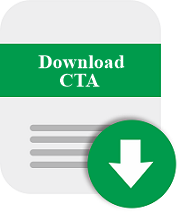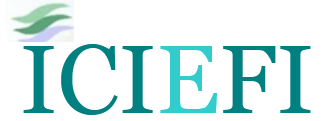Fintech and Its Potential Impact on Islamic Banking and Finance Industry: A Case Study of Brunei Darussalam and Malaysia
Abstract
Fintech is growing at an exponential rate which leads to the emergence of innovative business models. Advanced technologies like Blockchain, internet of things (IoT’s), artificial intelligence (AI), and robotics have become mature enough to create disruption in banking and finance industry both conventional and Islamic finance industry. Brunei Darussalam and Malaysia, both, offer wide range of Shari'a compliant services. The main purpose of this study is to investigate the potential impact of Fintech on the Islamic banking and finance industry in Brunei and Malaysia. Accordingly, this research deals with the qualitative method to accomplish and fulfill the research objectives. Content analysis and Semi-structured interview approach were employed throughout the research. The results clearly show that Fintech has great potential impact on both conventional and Islamic finance industry. This potential impact is in both ways i.e. positive and negative. And, the response and reaction of Islamic finance industry towards the emergence of Fintech and its potential impact seems very slow as compared to their conventional counterparts. This study has indicated important points which include the necessity for the Islamic financial institution to cope with the growth of Fintech.
Keywords
Full Text:
IJIEF 004 AliReferences
Abdullah, O. (2017). Fintech for Islamic Finance. Retrieved January 25, 2018, from Fintech for Islamic Finance website: https://islmfintech.com/
Accenture. (2016a). Blockchain Technology. Retrieved from https://www.accenture.com/t20161019T015506__w__/us-en/_acnmedia/PDF-35/Accenture-Blockchain-How-Banks-Building-Real-Time-Global-Payment-Network.PDF
Accenture. (2016b). Fintech and the evolving landscape: landing points for the industry. Retrieved from https://www.finextra.com/finextra-downloads/newsdocs/accenturefintech2016.pdf
Adam, M. F. (n.d.). Bitcoin: Shariah Compliant? Retrieved from http://darulfiqh.com/bitcoin-shariah-compliant/
Alonso, I. M. (2015). Crowdfunding in Islamic finance and microfinance: A case study of Egypt. Access to Finance and Human Development—Essays on Zakah, Awqaf and Microfinance, 85.
Arslanian, H. (2016, December 12). 10 FinTech Predictions for Asia in 2017. Retrieved from https://letstalkpayments.com/10-fintech-predictions-for-asia-in-2017/
Bergstra, J. A. (2015). Bitcoin and Islamic finance. Retrieved from https://dare.uva.nl/personal/pure/en/publications/bitcoin-and-islamic-finance(fe22a3e7-d432-4067-a1be-1a40f34a26a1).html
Biancone, P. P., Secinaro, S., & Kamal, M. (2019). Crowdfunding and Fintech: Business model sharia compliant. European Journal of Islamic Finance, (12).
Broby, D., & Karkkainen, T. (2016). FINTECH in Scotland: building a digital future for the financial sector.
Capgemini. (2016). Payments Domain Top 10 Trends for 2016. Retrieved from https://www.capgemini.com/resources/payments-domain-top-10-trends-for-2016
Capgemini Worldwide. (2017). Introducing The World FinTech Report 2017. Retrieved from https://www.capgemini.com/the-world-fintech-report-2017
Capgemini Worldwide, & BNP Paribas. (2017). World Payments Report 2017 | Developments in the Global Payments Landscape. Retrieved from https://www.worldpaymentsreport.com/
CB Insights. (2018). Fintech Trends to Watch in 2018. Retrieved from /research/report/fintech-trends-2018/
CFA Institute. (2016). FINTECH SURVEY REPORT. Retrieved from https://www.cfainstitute.org/Survey/fintech_survey.PDF
Coraggio, G. (2017, January 5). P2P lending boosted by new Italian FinTech rules? Retrieved from http://www.gamingtechlaw.com/2017/01/p2p-lending-fintech-italy.html
Dhar, V., & Stein, R. M. (2016). FinTech Platforms and Strategy. Retrieved from https://finopolis.ru/materials-of-forum/2018/FinTech_Platforms.pdf
Dinarstandards. (2018). Islamic Fintech Report 2018. Retrieved from
https://www.dinarstandard.com/wp-content/uploads/2018/12/Islamic-Fintech-Report-2018.pdf
Duflos, E. (2015, June 18). New accounts in China drive global financial inclusion figures [Text]. Retrieved October 2, 2017, from East Asia & Pacific on the rise website: http://blogs.worldbank.org/eastasiapacific/new-accounts-china-drive-global-financial-inclusion-figures
Elo, S., & Kyngäs, H. (2008). The qualitative content analysis process. Journal of Advanced Nursing, 62(1), 107–115.
Ernst & Young EY. (2016). The rise of FinTech in China (p. 48). Retrieved from http://www.ey.com/Publication/vwLUAssets/ey-the-rise-of-fintech-in-china/$FILE/ey-the-rise-of-fintech-in-china.pdf
Evans, C. (2015). Bitcoin in Islamic Banking and Finance. Journal of Islamic Banking and Finance, 3(1), 1–11.
Financial Services Cloud Adoption: Top Concerns. (2017, January 3). Retrieved January 22, 2018, from Peak 10 website: http://www.peak10.com/financial-services-cloud-adoption-top-concerns-making-move/
Finextra. (2014, October 13). Bank of Suzhou collaborates with Dianrong.com on P2P loans platform. Retrieved October 2, 2017, from Finextra Research website: https://www.finextra.com/pressarticle/57122/bank-of-suzhou-collaborates-with-dianrongcom-on-p2p-loans-platform
Finextra, & dovetail. (2017). Payments Transformation: Modernising to Stay Relevant in the Digital A. Retrieved from https://www.finextra.com/surveys/survey.aspx?surveyguid=9d2938cf-345f-43a5-9564-0f28c8398eb8
FINOCRACY, A. A., & MIRAKHOR, A. (2017). Accelerating Risk Sharing Finance Via Fintech: Nextgen Islamic Finance. Retrieved from https://www.sid.ir/en/seminar/ViewPaper.aspx?FID=433e20170101
Hasan, S. B. M. (2017, December 28). Islamic Fintech – A Threat for Islamic Banks or an Opportunity? Retrieved January 25, 2018, from Ethis Crowd Blog website: https://www.ethiscrowd.com/blog/islamic-fintech-and-islamic-banks/
International Data Corp. (IDC). (2012). Worldwide Big Data Technology and Services Forecast, 2012-16. Retrieved from http://www.idc.com/getdoc.jsp?containerId=25953
IOSCO. (2017). IOSCO Research Report on Financial Technologies (Fintech). Retrieved from https://www.iosco.org/library/pubdocs/pdf/IOSCOPD554.pdf
Islamic Financial Services Board IFSB. (2017). ISLAMIC FINANCIAL SERVICES INDUSTRY STABILITY REPORT 2017 (p. 158). Retrieved from Bank Negara Malaysia website: http://www.ifsb.org/docs/IFSB%20IFSI%20Stability%20Report%202017.pdf
Khan, T. (2015). Access to finance and human development—Essays on zakah, awqaf and microfinance: An introduction to the issues and papers. Access to Finance and Human Development—Essays on Zakah, Awqaf and Microfinance.
Kount. (2016). Mobile Payments & Fraud: 2016 Report. Retrieved from http://info.kount.com/hubfs/Pdf_Files/2016_MobilePaymentsFraudSurvey_Report.pdf
Kuo Chuen, D. L., Teo, E. G., & others. (2015). Emergence of FinTech and the LASIC principles. Journal of Financial Perspectives, 3(3), 24–36.
KPMG. (2016). Robo advising: Hype or opportunity? Retrieved from https://home.kpmg.com/content/dam/kpmg/pdf/2016/07/Robo-Advising-Catching-Up-And-Getting-Ahead.pdf
Lacasse, R.-M., Lambert, B., & Khan, N. (2017). Blockchain Technology-Arsenal for a Shariah-Compliant Financial Ecosystem. Retrieved from http://publications.uni.lu/bitstream/10993/33529/1/Research%20Paper%20Blockchain.pdf
LAJIS, S. M. (2017). RISK SHARING: OPTIMISING TRUE POTENTIAL OF ISLAMIC FINANCE.
Lajis, S. M. (2017). Risk-Sharing Securities: Accelerating Finance for SMEs. Islamic Economic Studies, 25(2), 35–55.
Laldin, M. A., &Furqani, H. (2019). FinTech and Islamic Finance. Fintech in Islamic Finance: Theory and Practice.
Lim, S. J., & Masih, M. (2017). Exploring portfolio diversification opportunities in Islamic capital markets through bitcoin: evidence from MGARCH-DCC and Wavelet approaches.
Lutfi, M. A., & Ismail, M. A. (2016). Sadaqah-Based Crowdfunding Model For Microfinancing And Health Care. Retrieved from http://ddms.usim.edu.my/handle/123456789/14853
Mackenzie, A. (2015). The fintech revolution. London Business School Review, 26(3), 50–53.
Marzban, S., Asutay, M., & Boseli, A. (2014). Shariah-compliant crowd funding: An efficient framework for entrepreneurship development in Islamic countries. Eleventh Harvard International Islamic Finance Form, Boston, April.
Mohamed, H. (2016). The Blockchain and Islamic Finance. Retrieved from https://www.academia.edu/30299556/The_Blockchain_and_Islamic_Finance
Mohamed, H. (2017, March). Smart Contracts in Islamic Economic Transactions – Wahed. Retrieved January 25, 2018, from https://journal.wahedinvest.com/smart-contracts-in-islamic-economic-transactions/
Munshi, U. (2017). Islamic Fintech: Wake up to the Truth | LinkedIn. Retrieved January 25, 2018, from https://www.linkedin.com/pulse/islamic-fintech-wake-up-truth-umar-munshi/
Ng, A., Mirakhor, A., & Ibrahim, M. H. (2015). Risk Sharing and Crowdfunding. In Social Capital and Risk Sharing (pp. 115–131). Springer.
Nordin, N. S., Hassan, R., & Nor, R. M. (2017). CRYPTOCURRENCY FROM SHARIAH PERSPECTIVE. Google Docs. Retrieved from https://drive.google.com/file/d/0B1d0lcOY3R9BcXJXVDBQSWM2Zjg/view?usp=embed_facebook
Nurhisam, L. (2017). Bitcoin: Islamic Law Perspective. QIJIS (Qudus International Journal of Islamic Studies), 5(2), 85–100.
Patpatia & Association and CGI. (2016). Beyond Robo-Advisors: Using Technology to Power New Methods of Client Advice and Interaction - Patpatia & Associates, Inc. Retrieved from https://www.cgi.com/sites/default/files/robo-advisor-automated-advice-platform-cgi-patpatia-white-paper.pdf
Peyton, A. (2017). Bank Islam plans digital Islamic banking roll-out. Retrieved January 26, 2018, from FinTech Futures website: http://www.bankingtech.com/2017/08/bank-islam-plans-digital-islamic-banking-roll-out/
PwC. (2016a). Blurred lines: How FinTech is shaping Financial Services. Retrieved from https://www.pwc.de/de/newsletter/finanzdienstleistung/assets/insurance-inside-ausgabe-4-maerz-2016.pdf
PwC. (2016b). Catching the FinTech wave: A survey on FinTech in Malaysia. Retrieved from https://www.pwc.com/my/en/publications/catching-the-fintech-wave.html
PwC. (2016c). Customers in the spotlight: How FinTech is reshaping banking. Retrieved from https://www.pwc.com/gx/en/industries/financial-services/publications/fintech-is-reshaping-banking.html
PwC. (2017). Blockchain - The next wave of digitisation in asset management. Retrieved from https://www.pwc.com/gx/en/industries/financial-services/asset-management/publications/assets/pwc-2-revolution-or-evolution.pdf
Research and Markets. (2016a). Global Crowdfunding Market 2016-2020. Research and Markets. Retrieved from http://www.researchandmarkets.com/reports/3608989/global- crowdfunding-market-2016-2020
Root, A. (2013). Shekra Blends Crowdfunding with Islamic Finance.”. Retrieved from https://islamicmarkets.com/publications/crowdfunding-in-islamic-finance-and-microfinance-a-case-study
Schueffel, P. (2016). Taming the Beast: A Scientific Definition of Fintech. Journal of Innovation Management, 4(4), 32–54.
Taha, T., & Macias, I. (2014). Crowdfunding and Islamic Finance: A Good Match? In Social Impact Finance (pp. 113–125). Springer.
Tayel, M. M. I., & Sganga, C. (2015). CAN BITCOIN BE SELF-REGULATORY LEGAL TENDER?: A COMPARATIVE ANALYSIS OF UNITED STATES, EUROPEAN UNION AND ISLAMIC LEGAL SYSTEMS.
The White House. (2016). Big Data: A Report on Algorithmic Systems, Opportunity, and Civil Rights. Washington.
Torabi, O. (2017). Using reputation (fame) to reduce information asymmetry in Islamic risk-sharing crowdfunding models: a game theory approach.
Todorof, M. (2018). Shariah-compliant fintech in the banking industry. ERA Forum, 19, 1–17. Springer.
Turner, V., Gantz, J. F., Reinsel, D., & Minton, S. (2014). The digital universe of opportunities: Rich data and the increasing value of the internet of things. IDC Analyze the Future, 5.
Veronika. (2016, December 21). Blockchain in Islamic Banking – Opportunities Aplenty. Retrieved August 10, 2017, from The Fintech Times website: http://thefintechtimes.com/blockchain-islamic-banking-opportunities-aplenty/
Wahjono, S. I., & Marina, A. (2017). Islamic crowdfunding: alternative funding solution. Editors, 30.
World Economic Forum. (2016). The future of financial infrastructure: An ambitious look at how blockchain can reshape financial services (p. 130). Retrieved from http://weforum.org/reports/the-future-of-financial-infrastructure-an-ambitious-look-at-how-blockchain-can-reshape-financial-services
Zubaidi, I. B., & Abdullah, A. (2017). Developing a Digital Currency from an Islamic Perspective: Case of Blockchain Technology. International Business Research, 10(11), 79.
DOI: https://doi.org/10.18196/ijief.2116
Refbacks
Copyright (c) 2019 International Journal of Islamic Economics and Finance (IJIEF)

This work is licensed under a Creative Commons Attribution-ShareAlike 4.0 International License.
International Journal of Islamic Economics and Finance (IJIEF)
International Program for Islamic Economics and Finance
Department of Economics
Faculty of Economics and Business
Universitas Muhammadiyah Yogyakarta
Pascasarjana Building, Ground Floor
Jl. Brawijaya (Ringroad Selatan), Kasihan, Bantul
D.I. Yogyakarta 55183, INDONESIA
Official email: ijief@umy.ac.id












1.jpg)